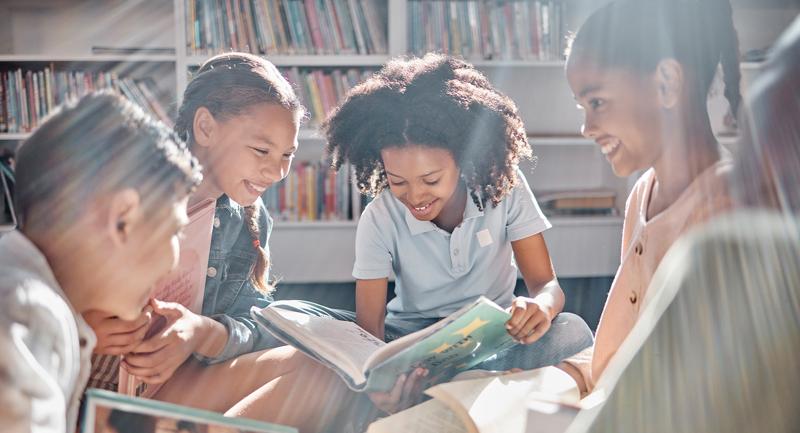September 13, 2018
•
5 min (est.)•
Vol. 14•
No. 2Five Ways to Help Students Ask Better Questions
When educators think about improving the use of questions in the classroom, we tend to focus on the relevance, depth, accessibility, and pacing of teachers' questions. We also think about the variety and nature of texts, images, and other resources students can use as they ponder those questions. While all these things matter, it is equally important to help students ask and pursue their own questions.
Students' ability to function as adults in an increasingly complex world depends upon their capacity to ask questions and seek answers related to their values and goals. A robust questioning repertoire feeds curiosity and enhances our discernment as consumers and users of knowledge. It affects students' academic life, too: Doing well on assessments depends on understanding the attributes and purposes of the different questions as much as knowing the answers.
So, how do we spark students' curiosity to question everything and learn from their questions? For more than two decades, Learner-Centered Initiatives, a teaching and learning professional development organization for which I serve as president, has synthesized significant research on learning and inquiry. In our work with teachers to design student-centered curriculum and assessment, we have distilled five practices they can use to help students become better questioners.
An image, a work of art, a phrase, an object, or a social or political issue can become fodder for students to generate all kinds of questions when teachers provide the space and time. After students examine a visual work or read a few paragraphs about an issue, they can generate questions to categorize into clusters. Labels for grouping questions could include designations such as "hard," "easy," "one-word answer," "different answers," or "debatable." They could be guided by heuristics such as what, when, where, why, how, or under what conditions. For example, while examining a painting, students could generate questions like: Who painted this, and when? How did the painter create the textures? Is the scene based on a real place? Who are the children in the painting? Is this painting famous? What emotions does the subject of the painting convey?
Teachers can also ask students to cluster these questions into those that have subjective answers and those that have factual answers available through research. Categorizing questions helps students analyze their varying attributes and purposes, enhancing students' ability to respond to questions on assessments.
Students become better at asking questions when they have explicit criteria for the types of questions they can ask to achieve different purposes. These criteria could refer to the depth or rigor of their questions, the nature of the inquiry they might pursue once they select a question, and the sources that they will access to answer their questions. For example, students can decide if they want a question to help them analyze or evaluate information, clarify an assumption or misconception, uncover biases, analyze errors and explain confused thinking, question others' thinking, or develop or support an opinion using evidence from texts or field research.
Having explicit guidelines increases the depth of the questions students pursue to achieve different purposes.
Student feedback during the question-forming process helps frame the scope, quality, and usefulness of the inquiry. Protocols for peer review in small groups show students how to respectfully assess and respond to each other's questions, ensuring constructive feedback that directs students in deepening their inquiry. As the inquiry progresses, teachers might assign these student groups specific tasks, like fact checking, researching primary or secondary sources, finding supporting evidence, and selecting citations; and then provide rubrics for feedback that give students appropriate parameters for the language they use to critique. Rotate the tasks on a regular basis so that every student has practice with each role.
What is the largest number? When is the price for progress too high? At what age do you become wise? What is a perfect family? These are examples of essential questions—universal, debatable, and paradoxical questions that promote deep thinking. Unlike other open-ended questions, they are relevant to people of all ages, cultures, and backgrounds, invite multiple perspectives, and elicit new questions. While there is not one right answer to an essential question, inviting students to come up with essential questions through inquiry and investigations can increase their motivation and lead them to answers informed by evidence. A tool kit our organization created includes examples of essential questions and ways to use them with students.
It is essential that we help students consume information critically, and improving students' questioning skills is a step in the right direction. Pursuing truthful essential questions on problems or issues that need attention adds context and relevance to learning experiences, and can also empower students to speak up and right wrongs. For example, students could investigate how well their community serves the needs of disabled individuals, conduct a cost-benefit analysis of alternative programs and services, and present their recommendations to the city council.
The continued emphasis on preparing students for tests and other exams by only practicing questions that mirror the assessments has few payoffs. Students need exposure and practice to the world of questions—recognizing them, framing them, and pursuing them. If we teach students to ask the right questions, we will help them lead lives full of meaningful inquiry.







